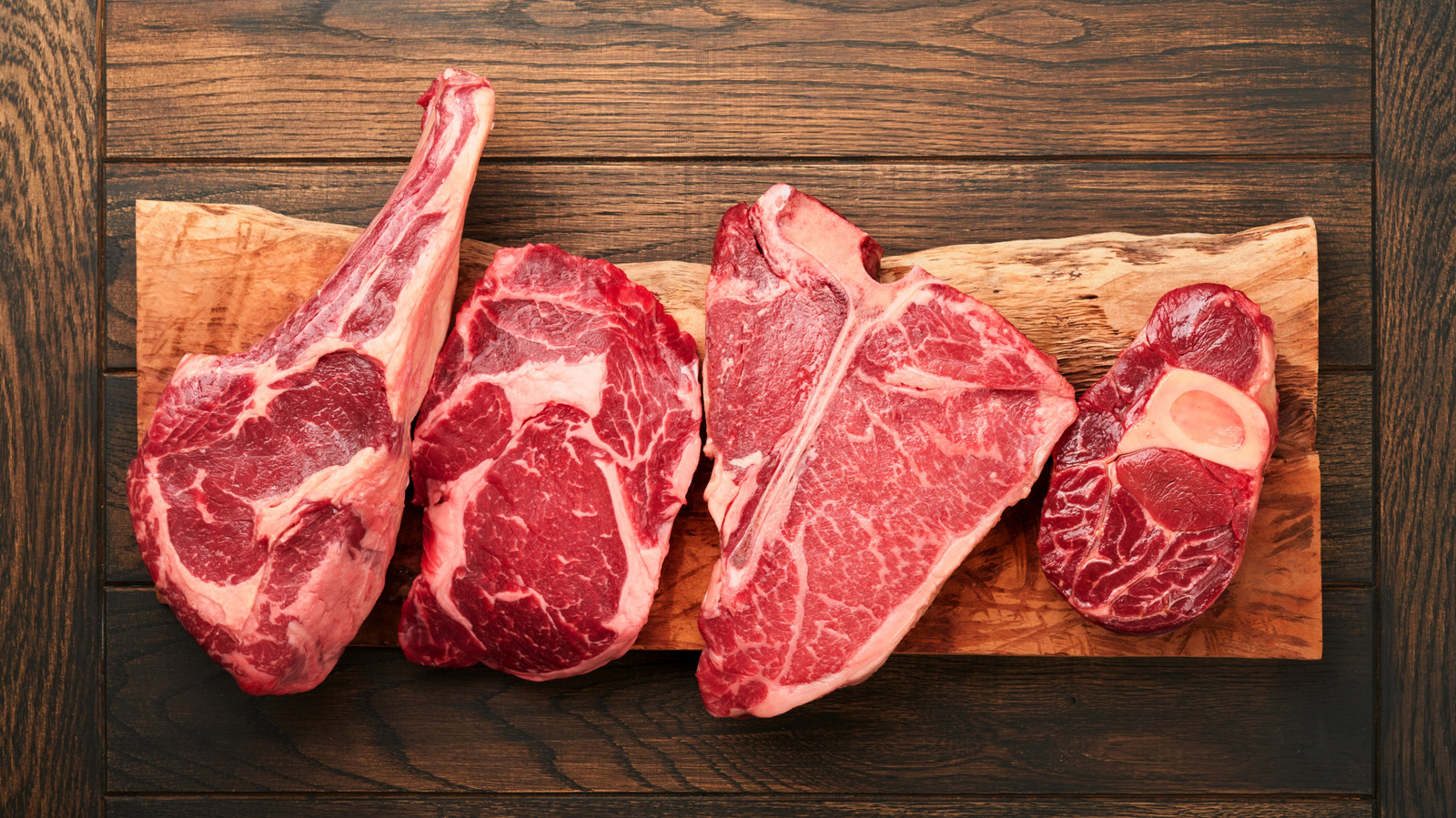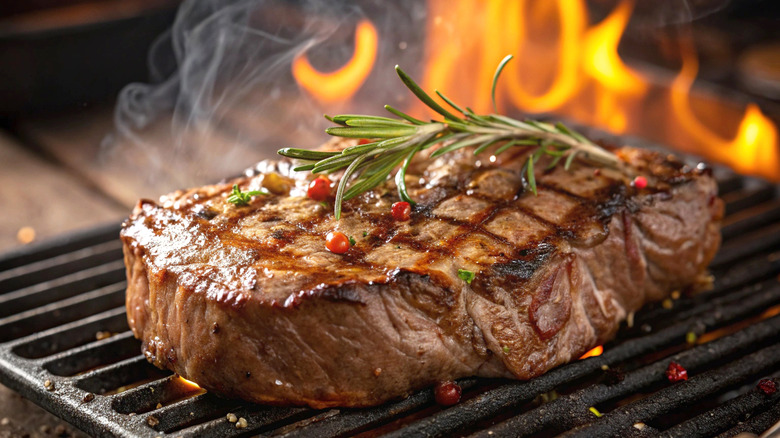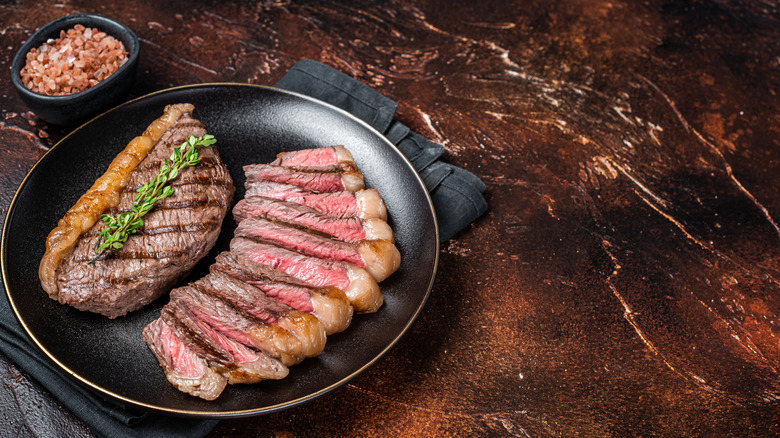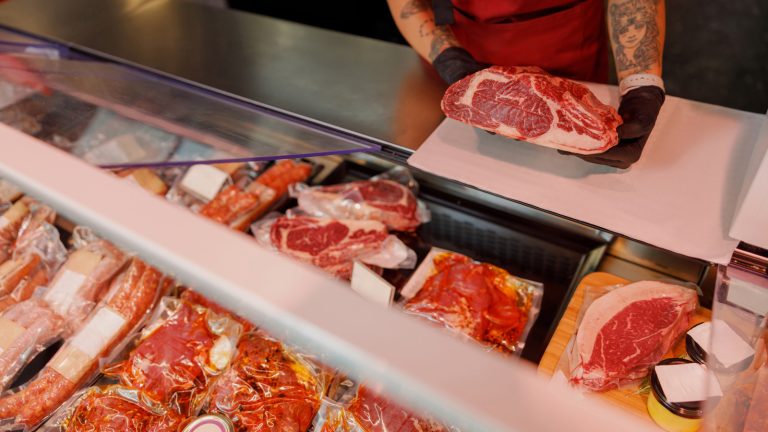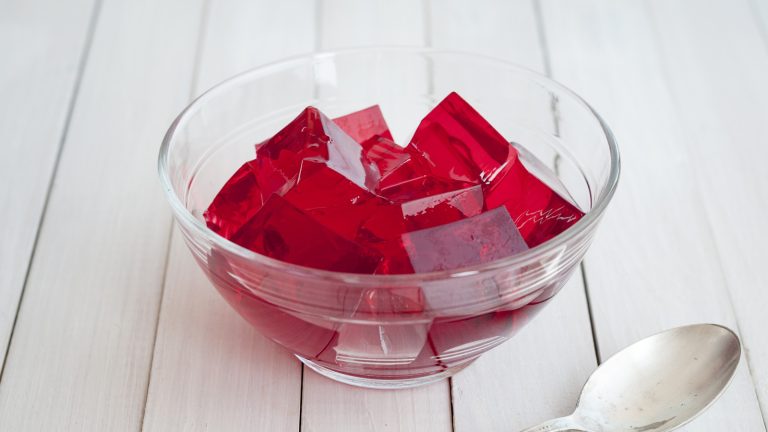The differences between cooking a ribeye versus a sirloin steak all lie in their marbling. While the presence, or absence, of fat impacts a cut’s cooking requirements, both types of beef still share some similarities while maintaining what makes them so unique. Food Republic spoke with executive chef Dominick Pepe from Rocco’s Steakhouse to learn more about the differences and commonalities between sirloin and ribeye.
“In my opinion, the best way to cook any steak is over an open fire,” Pepe said. “I cook both ribeye and sirloin on an open flame to achieve a nice char and crust, then move them over the coals to slowly bring them to the desired internal temperature.” While searing meat doesn’t lock in juices, it does guarantee a more substantial, flavorful crust. Over direct flames, then cooler coals, that crust develops quickly and effectively, becoming infused with smoky flavor that complements the richness of a ribeye and the meaty leanness of a sirloin equally well.
Searing meat over an open flame to develop a high-quality Maillard crust is a favorite technique of acclaimed chef, Francis Mallman, whom Peppe encourages budding meat grillers to look into to learn more skills. Still, despite both cuts of steak loving an open fire, that doesn’t mean you can treat them exactly the same. “The primary difference in prep between a ribeye and a sirloin lies in managing the heat during cooking,” Pepe explained. “However, the cooking temperature goal is the same for both to achieve the desired internal doneness.”
How to grill a ribeye over fire or coals
Even if you ignore their rich, smooth flavor, many folks love ribeyes because they’re practically foolproof for beginners. A great quantity of marbling all but guarantees they won’t dry out, but it does present one problem that could potentially become a safety hazard.
“For a ribeye, which is a fattier cut, it’s important to monitor for flame-ups caused by the rendered fat dripping onto the coals or flame, so a slightly lower heat might be preferable to avoid a smoky, burnt flavor,” Dominick Pepe explained. If your grill is too hot, you get flame-ups that could burn your steak rather than develop a crust. If it’s too cold, crusts take longer to make, meaning the interior of your steak could potentially overcook.
However, since ribeyes are so hard to dry out, it’s always best to opt for a slightly cooler fire than one that’s too hot. Compared to sirloins, which have a higher risk of drying out, they’re far better at developing their flavors over lower temperatures. This is especially true if you’re cooking choice or even prime steaks, which have more intramuscular fat than select-quality. However, some people like a bit more char to their steak, and that’s much easier done for lean meats.
How to grill a sirloin over fire or coals
A lot of people are familiar with sirloin as a component of ground beef. However, the sirloin primal yields some of the most criminally underrated cuts of steak out there, and each and every one of them loves a hot flame.
“Sirloin, being leaner, doesn’t have the same issue with flame-ups,” Dominick Pepe noted. Since it has the highest amount of protein of any cut, the only way you could really get a flame-up is if it drips oil-laden marinade onto the coals. However, Pepe dismissed the idea, telling us he personally never marinates his meat. “I only season with salt, preferably an Italian or fresh sea salt. If you want to add pepper, I recommend doing it after the steak is finished cooking.”
Since sirloin lacks much fat, you’ll need to cook it hot and fast to keep it juicy. If you or your dinner guests prefer a simple, straightforward steak seasoned primarily by its own quality, sirloin is a quick and easy option. Just because it isn’t quite as popular (or expensive) as ribeye doesn’t mean it’s any worse. In fact, tri-tip, a large roast from the sirloin primal, is a fantastic substitute for expensive prime rib roasts when you’re hosting large groups. Plus, since sirloin cooks so quickly, it’s often easier for party hosts to prepare compared to marbled cuts that require far more attention.


